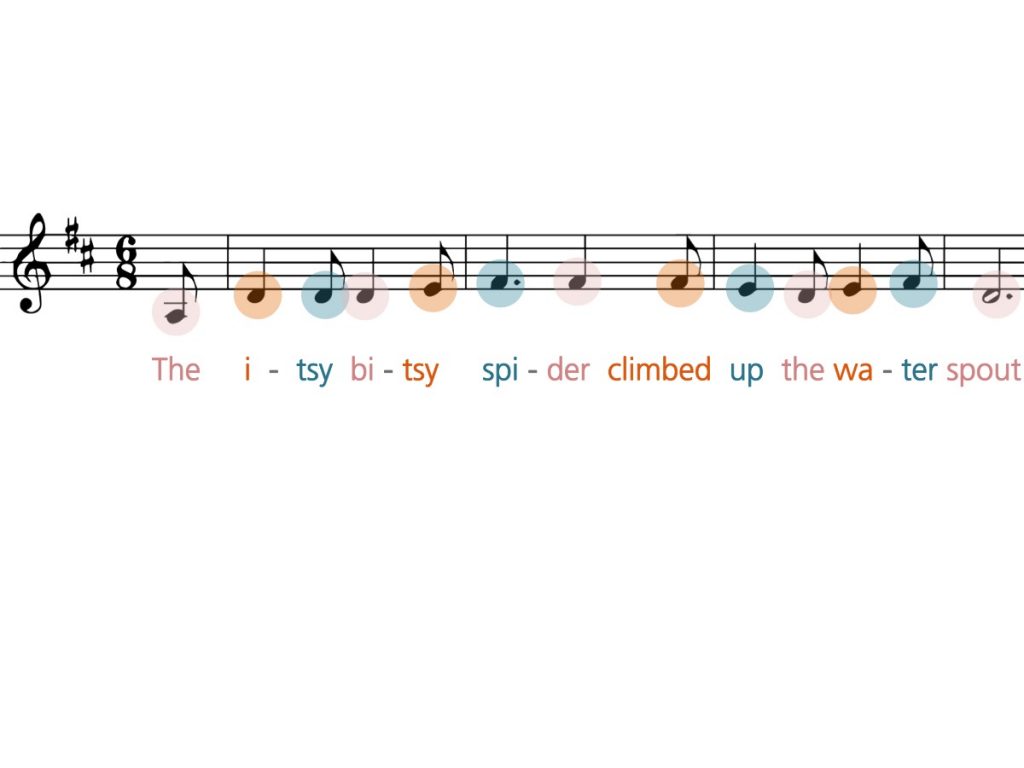
Language and music are the two most common types of sounds we experience on a daily basis. Both deliver important information to the brain through sound signals. And both are universal among cultures around the world.
Notes are the building blocks of music. In a similar way, speech is also made up of shorter sounds, the building blocks of speech. These building blocks are syllables. Syllables can be further divided into consonants and vowels. Our brains learn to decode these fast changing speech sounds individually and use them to learn languages during our first year of life. You can explore speech sound learning in Module 6.
-
- Beat
- the regular pulse of music
- Electroencephalography (EEG)
- a non-invasive method used to measure electrical activity in the brain
- Executive function
- a set of mental abilities that help us focus attention, remember information, and switch between tasks
- Magnetoencephalography (MEG)
- a non-invasive brain imaging technique used to determine which regions of the brain are active
- Meter
- a grouping of beats with specific patterns
- Neuroplasticity
- the ability to change how neurons in our brain are connected to each other
- Pitch
- the measure of how high or low we perceive sounds to be
- Pro-social behavior
- actions that are intended to help others
- Synchronized movement
- movements that occur in sync with musical beats and, or with other people
- Timbre
- the quality of a musical sound or voice that allows us to tell the differences between instruments or voices